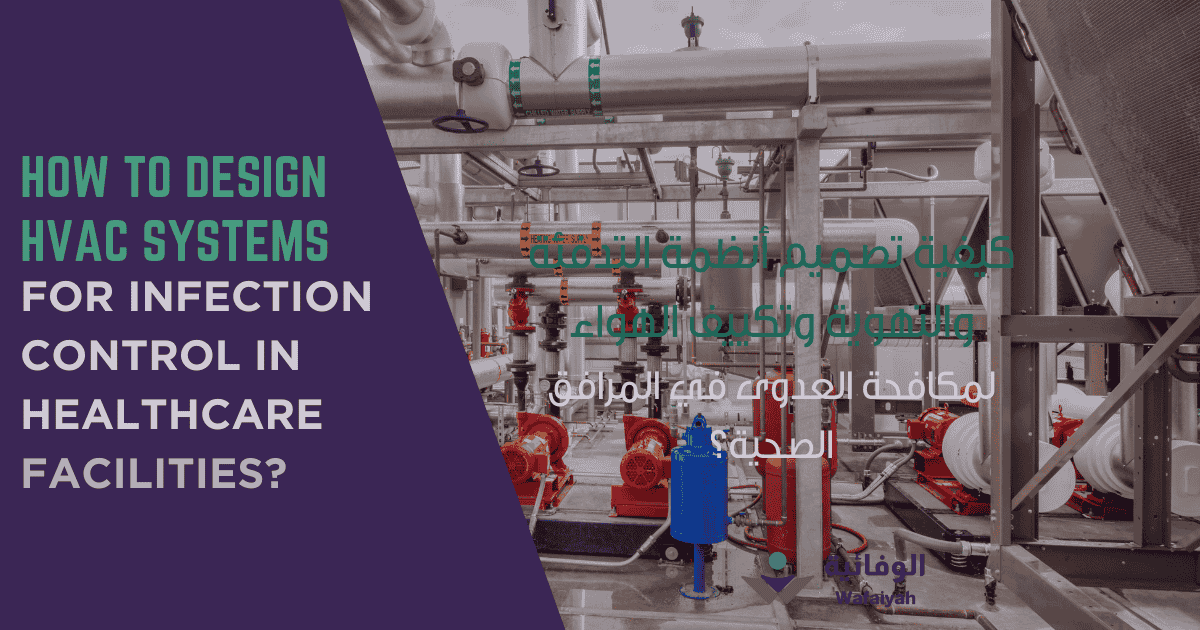In healthcare facilities, controlling infections is a matter of life and safety. One of the most powerful tools in this fight is the HVAC system. When designed correctly, it doesn’t just heat or cool; it actively protects patients, staff, and visitors by reducing airborne contaminants. This is why hospitals, clinics, and labs invest heavily in specialized ventilation solutions. Wafaiyah understands that every duct, filter, and airflow pattern can mean the difference between risk and safety. Let’s explore how a well-designed HVAC system can be the silent guardian of health in medical environments.
Role of HVAC in Infection Control
In healthcare, HVAC systems are much more than just keeping the temperatures comfortable. They regulate the movement, filtration, and replacement of air. Ventilation plays a significant role in stopping the airborne transmission of infection. In the absence of adequate air changes per hour (ACH), air pathogens may raise the risk of infection.
Hospitals should make sure that the polluted air is eliminated within a short time and replaced by fresh and filtered air. This also involves having suitable air pressure in some rooms. There must be negative pressure in isolation rooms and positive pressure in operating rooms. Knowing these roles, designers will be able to develop systems that will actively participate in a safer, cleaner, and healthier facility.
The healthcare HVAC system design comes under strict regulations. Organizations such as ASHRAE, CDC, and WHO highlight basic guidelines on air changes, filtration, and pressurization. As an example, ASHRAE Standard 170 provides requirements of ventilation in hospital facilities, including minimum ACH of various spaces.
CDC focuses on the use of airborne infection isolation (AII) rooms in case of highly contagious cases. Compliance does not only mean legal obligation but also saving lives. All the designs should be verified using these guidelines to ascertain safety and efficiency. Keeping up to date with changing standards will keep your system in the proper condition.
Key HVAC Design Principles for Infection Control in Healthcare
HVAC design is based on three major principles, which are helpful to control diseases in healthcare. This includes:
- Filtration Standards
- Airflow Patterns
- Humidity & Temperature Control
Let’s explain each one of them in detail below:
Filtration Standards
In the healthcare sector, filtration systems play a vital role in the removal of contaminants in the air. In high-risk areas such as operating rooms and isolation wards, HEPA filters are necessary. They trap 99.97% of particles 0.3 microns and above. MERV ratings (120) reflect the performance of the filter. The higher the rating, the smaller the particle that can be trapped. Lower MERVs are used in general spaces. Higher MERVs are used in emergency areas to find a balance between air purity, energy usage, and equipment operation.
Airflow Patterns
Proper air flow patterns prevent the spread of pathogens. There should be adequate management for direction and pressure. Positive pressure rooms protect patients (e.g., transplant units). Negative pressure rooms are designed to draw in air and have contaminants (e.g. TB isolation). Designing the airflow properly means that there is an equal supply and exhaust system, which is regularly checked. This helps to ensure that the desired flow patterns are maintained in the actual operating conditions.
Humidity & Temperature Control
Relative humidity between 40 and 60 percent can reduce the survival of airborne pathogens. It also reduces the dryness of the mucosal surfaces of the occupants. Reduced levels of moisture also stop the development of viruses and encourage the growth of molds. Temperature control keeps the patient comfortable and performs infection control. Too hot can promote microbial growth, and too cold can cause stress for the patient.
Following HVAC Strategies in Specialized Hospital Areas
Operating Theatres
The operating theatres should have proper control of air to protect patients undergoing surgery. Laminar airflow systems provide a continuous flow of clean air that is smooth and constant, which reduces the chances of air contamination. These systems combine with ultra-clean ventilation standards to guarantee a high air change per hour. They maintain a sterile environment by regulating temperatures, humidity and the number of particles to promote patient safety and surgical success.
Isolation Rooms
Isolation rooms are built to prevent infectious particles from escaping into the environment. Negative pressure ventilation makes sure that the air enters the room but does not leave, enclosing possible pathogens. There is an additional safety measure of exhaust air treatment and monitoring. In this measure, the air is filtered and disinfected before it is released. The strategies are essential to hospitals, and they eliminate cross-contamination and protect the healthcare personnel.
ICUs and Emergency Rooms
ICUs and emergency rooms are at high risk of diseases because of continuous patient turnover and critical conditions. Fast air filters help in the maintenance of clean air, and they eliminate harmful particles quickly. The duplication of air supply systems provides the security that the ventilation will not stop in case of a power outage or equipment malfunction. This consistency helps in infection prevention and provides healthcare teams with the consistency they require to provide critical and life-saving procedures.
Technology & Innovation in HVAC for Infection Control
The modern systems are playing a significant role in reducing the risks of airborne infections. Ultraviolet Germicidal Irradiation (UVGI) is one of them. It is installed within ducts and upper-room spaces to inactivate pathogenic microorganisms. Real-time air quality and room pressure monitoring are now possible with smart sensors providing real-time feedback to ensure safe conditions. The systems can also predict a change in particles, humidity, and differences in pressures quickly.
Meanwhile, the HVAC designs are energy-efficient to perform quick infection control. With the help of modern technology and sustainability, companies can achieve healthier indoor spaces and cut the cost of operations. Such a balance helps the safety as well as long-term environmental responsibility.
Design Challenges & Best Practices to Follow
Different significant challenges are encountered in designing the system for the healthcare sector. Among the largest is to balance high ventilation rates and energy performance. This balance allows the fresh air to enter indoors with the consumption of power.
Retrofitting old facilities to fit current standards of safety and ventilation can be complex and expensive. Nevertheless, compliance can be improved through specific upgrades. This includes the addition of UVGI units, filter upgrades, or the addition of smart controls, without replacing the whole system. Continuous maintenance and staff training are another essential element.
Even the most efficient systems may become ineffective if filters are not replaced in time. It can stop working if you are neglecting sensors or adjusting airflow settings without supervision. With a mix of smart design, routine maintenance and appropriate employee education, an organization can maintain its systems operation. This will guarantee both safety and comfort within its premises.
Conclusion
Designing HVAC systems for infection control in healthcare facilities is both a science and a responsibility. Every choice, from filter type to airflow direction, plays a role in protecting patients and staff. A well-planned system not only meets regulatory standards but also provides peace of mind in critical environments. At Wafaiyah, we combine technical expertise with a deep understanding of healthcare needs, ensuring every project delivers safety, efficiency, and long-term value for the people who rely on these essential facilities.
Frequently Asked Questions
1. Why is HVAC important for infection control in hospitals?
It helps control airborne pathogens, maintains safe air pressure, and filters contaminants to protect patients and staff.
2. What is the ideal humidity level in healthcare facilities?
Typically, 40–60% relative humidity helps reduce pathogen survival and prevents mold growth.
3. What is a negative pressure room used for?
It keeps contaminated air inside the room, preventing the spread of airborne infections to other areas.
4. How often should hospital HVAC filters be replaced?
HEPA filters may last 6–12 months, but schedules depend on usage and manufacturer recommendations.

